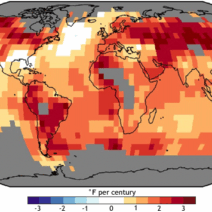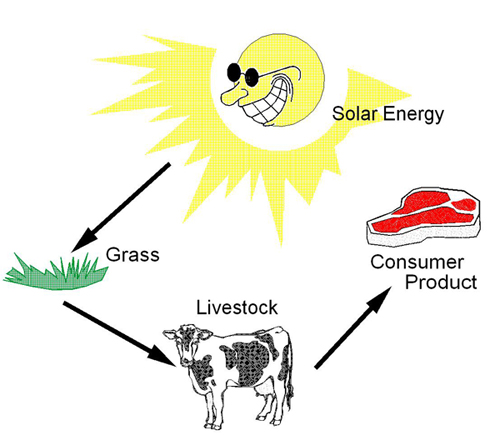Air conditioners, ubiquitous in modern society, are often regarded as the epitome of comfort. Yet, beneath this veneer of convenience lies a more complex narrative—a tale that intertwines our quest for relief from sweltering heat with the overarching dilemma of climate change. While air conditioners may offer a reprieve in stifling temperatures, their contribution to global warming is significant and warrants our attention.
To illustrate this dichotomy, consider the air conditioner as a double-edged sword. On one blade, it grants immediate solace from scorching summers; on the other, it inflicts harm on the environment, exacerbating the very problem it seeks to mitigate. This paradox invites an exploration of both the mechanics of air conditioning and their environmental footprint.
The mechanism by which air conditioners operate is deceptively simple: they draw in warm air, cool it, and recirculate it, creating a comfortable indoor climate. However, this process is heavily reliant on electricity, often sourced from fossil fuels. The combustion of these fuels releases carbon dioxide (CO2) and other greenhouse gases into the atmosphere, acting as a proverbial greenhouse blanket that traps heat and increases global temperatures. This cycle bears a staggering metaphorical resemblance to a car that, while designed for speed and convenience, produces noxious fumes that pollute the very roads it travels. While we may benefit from the speed, the environmental cost is high.
As air conditioning usage continues to surge, particularly in developing nations grappling with extreme heat, the implications become increasingly dire. The International Energy Agency (IEA) projects that by 2050, the number of air conditioners in use could exceed 5 billion. As this figure grows, so too does the energy demand. With current energy systems still heavily reliant on fossil fuels, air conditioners could account for up to 20% of total electricity consumption in some regions. This efficiently designed contraption becomes an unwitting accomplice in the climate crisis, as more units translate to elevated emissions.
Moreover, there exists a more insidious aspect to the basic workings of air conditioning: refrigerants. These substances, while essential for the cooling process, have a global warming potential (GWP) that far exceeds carbon dioxide. For instance, hydrofluorocarbons (HFCs), commonly found in many air conditioning units, are thousands of times more potent as greenhouse gases than CO2. Although mitigation efforts, like the Kigali Amendment aiming to phase out HFCs globally, mark a step toward addressing this issue, the legacy of these substances lingers long after they are released into the atmosphere. It is akin to a time bomb—its impact unwittingly delayed but eventually catastrophic.
Yet, despite the apparent downsides, the challenge of reconciling comfort with sustainability is not insurmountable. A paradigm shift in our approach toward air conditioning technology is imperative. Innovations are underway in the form of energy-efficient models—those that utilize alternative refrigerants with lower GWP and improved insulation properties. The advancement of smart technologies also promises to optimize usage, reducing energy consumption without sacrificing comfort. By embracing these innovations, we might not only diminish the environmental impact of air conditioning but also redefine its role in our lives.
Additionally, integrating passive cooling strategies can serve as a viable counterbalance to reliance on mechanical cooling solutions. Employing architectural techniques such as natural ventilation, thermal mass, and shading can significantly reduce dependence on air conditioning. The use of strategically placed trees or awnings can create microclimates that cool spaces naturally, offering an elegant solution to the heat without contributing to atmospheric warming. This approach is reminiscent of ancient civilizations that harmoniously coexisted with their environment, a stark contrast to our current consumer-driven paradigm.
Furthermore, community awareness and advocacy play a pivotal role in mitigating the impact of air conditioners on global warming. Encouraging individuals and businesses to adopt more sustainable practices can catalyze collective action. Initiatives such as energy audits, rebate programs for energy-efficient appliances, and public education campaigns can cultivate a cultural shift toward accountability and environmental stewardship. Ultimately, it is within our power to shape a more sustainable future through informed choices.
In context, the air conditioner serves as both a harbinger of comfort and a bearer of responsibility. As we navigate the intricate landscape of climate change, it is crucial to critically assess our dependence on such devices. Our quest for comfort should not come at the expense of the planet’s health. Embracing innovation, advocating for sustainability, and integrating passive strategies into our communities can provide pathways to balance our desires with the imperatives of environmental stewardship.
In conclusion, the question, “Do air conditioners make global warming worse?” reveals an undeniable truth. Yes, they do, as both a direct and indirect contributor to greenhouse gas emissions. However, it is essential to remember that, like any tool, their impact hinges on how we choose to wield them. By reimagining our relationship with air conditioning, we can transform this symbol of modern convenience into an ally in our fight against climate change. In doing so, we not only preserve our comfort but safeguard the planet for future generations.







